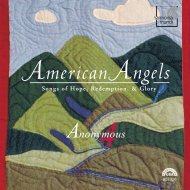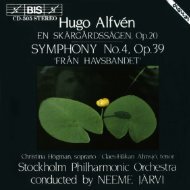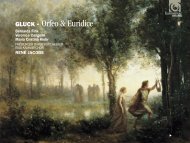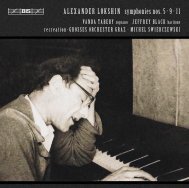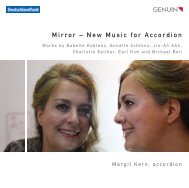NIELSEN THE SYMPHONIES - eClassical
NIELSEN THE SYMPHONIES - eClassical
NIELSEN THE SYMPHONIES - eClassical
Create successful ePaper yourself
Turn your PDF publications into a flip-book with our unique Google optimized e-Paper software.
gramme and again at the publication of the work in 1905, the overture was<br />
provided with the following motto: ‘Silence and darkness – then the sun rises to<br />
a joyous song of praise – treads its golden path – slowly sinks into the sea.’<br />
Saga-Dream for orchestra was conceived with inspiration from the ancient<br />
Ice landic epic Njál’s saga. It was an episode concerning the chieftain Gunnar of<br />
Hlíðarendi which caught Nielsen’s interest. The warlike Gunnar gets involved<br />
in various fights, kills a number of men and is finale banished into exile. On his<br />
way to the ship which will carry him to Norway he falls asleep.<br />
‘He dreams of a brighter and better future for mankind,’ Nielsen said regard -<br />
ing his hero, ‘and in muted tones I have tried to express the strange thoughts that<br />
the dream engenders.’ Nielsen completed Saga-Dream on 1st April 1908, and<br />
five days later the piece was premièred by the Music Society in Copen hagen,<br />
with Nielsen himself conducting. The reception was rather mixed, but Nielsen<br />
regarded the work with affection and conducted it regularly throughout his life.<br />
In the printed programme for a concert of Carl Nielsen’s own works at the<br />
Odd Fellows Hall on 28th February 1912, the Third Symphony was presented<br />
merely as ‘Symphony (new)’. But very soon the composer decided that it would<br />
be useful to include the character description of the first movement as a subtitle<br />
to the entire symphony. And thus Carl Nielsen’s third symphony came to be<br />
known as Sinfonia espansiva. Within a short space of time the symphony re -<br />
ceived several performances in Copenhagen, a result of the general acclaim<br />
with which the new work had been received upon its première. Gustav Hetsch,<br />
for example, had written in Nationaltidende: ‘As a whole the symphony must be<br />
considered one of the most important and interesting to be found in Danish<br />
music up to the present.’<br />
Nielsen had started working on the symphony early in 1910. The main theme<br />
of the first movement is said to have come to him during a tram ride, and he<br />
9








